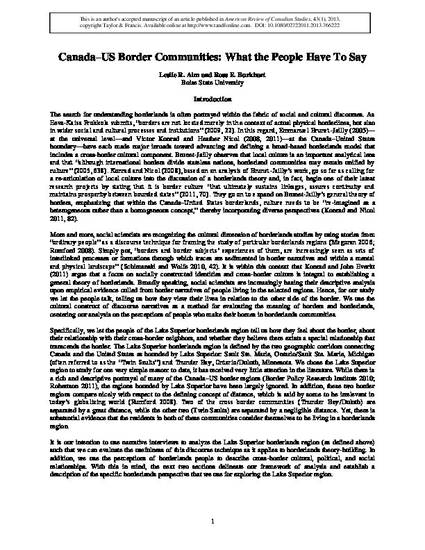
This paper investigates the Canada-U.S. borderlands relationship along the two geographic corridors as bounded by Lake Superior: Sault Ste. Marie, Ontario–Sault Ste. Marie, Michigan and Thunder Bay, Ontario–Duluth, Minnesota. Borderland communities—driven by their shared cultural characteristics (ethnicity, language, religion)—are said to challenge the border as a dividing device and undermine the very essence of international borders. Moreover, borderlands regions are dynamic and overlapping, providing the first point of contact and interaction between nations. We use interviews of over 200 people living in these borderlands regions to investigate the cross-border relationships of Canada-U.S. border communities. We find that despite the challenges of crossing the border, these communities retain a strong sense of shared values.
This is an author's accepted manuscript of an article published in American Review of Canadian Studies, 43(1), 2013, copyright Taylor & Francis. Available online at http://www.tandfonline.com. DOI: 10.1080/02722011.2013.766222
Available at: http://works.bepress.com/ross_burkhart/27/
